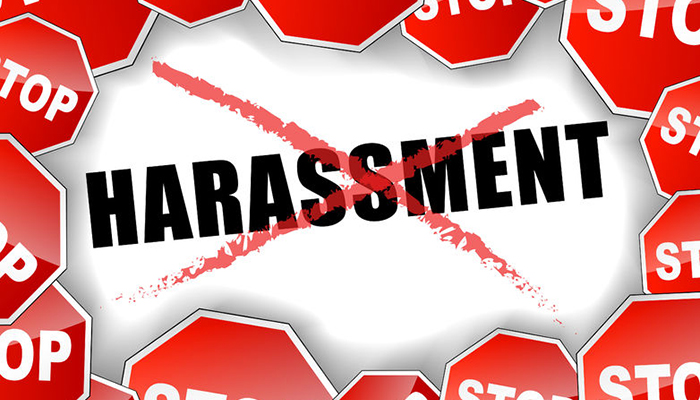 Regardless of the workplace setting, sexual assault and sexual harassment is present and has existed for centuries. The casting coach, lord of the manor and the servant girl, the executive and the secretary, the professor with the student, have been storylines based on real life, in films, novels, and fodder for gossip circles. In each instance the victim was in their place of work. The EEOC receives almost 100,000 complaints a year and one-third are about harassment. The acts have become so prevalent, they become part of the organization’s humor (the Harvey Weinstein jokes at the Academy Awards) and become company legend. The behavior becomes normalized.
Regardless of the workplace setting, sexual assault and sexual harassment is present and has existed for centuries. The casting coach, lord of the manor and the servant girl, the executive and the secretary, the professor with the student, have been storylines based on real life, in films, novels, and fodder for gossip circles. In each instance the victim was in their place of work. The EEOC receives almost 100,000 complaints a year and one-third are about harassment. The acts have become so prevalent, they become part of the organization’s humor (the Harvey Weinstein jokes at the Academy Awards) and become company legend. The behavior becomes normalized.
Recently, the extent of the issue has become public because the alleged perpetrators are well-known leaders, easily exposed in social media. The very public accusations prompted a deluge of “me too” victims with credible claims that had an unsettling familiarity. Repeatedly, there are events where people at subordinate levels are left to feel unsafe, degraded, and plagued with life-long memories of the assaults, all for the sake of gratification and power mongering of a sick few.
Why was such egregious behavior allowed to happen? Why was it the secret so many knew? What can be done to protect the innocent?
I don’t pretend to know the answers to this complex problem, so I did some research on those I will call the silent co-conspirators — those who knew but said and did nothing.
An interesting psychosocial phenomenon known as “defusing of responsibility” may give us some insights. Research shows people are less likely to take responsibility for an action or inaction when others are present. This seems to be especially true when responsibility has not been explicitly assigned in the first place. We assume (hope) others will take charge and back away from our nobler selves. In the workplace it is easy to see how that might be perceived or used as an excuse. Is it senior management, the direct supervisors, HR, the Board, co-workers, or in some twisted way, the victim, in charge of making assaults stop? The list is long, which is part of the problem. One could easily say “all of the above” and would be right. You can see how anyone could justify thinking, “it’s not my problem” or “what am I supposed to do?” Most of us need to plead guilty to some form of defusing and would qualify as bystanders.
Action and taking responsibility requires courage. Publicly addressing a problem of this magnitude places one in the vulnerable position of possibly being wrong or misunderstood. There are legitimate fears, whether you are right or wrong, of retribution, repercussions, counterattacks, isolation, being ostracized, or having to face the negative consequences many whistleblowers have endured in the past. There is self-doubt and self-blaming. Because of these possibilities, many of us remain on the sidelines.
It is known that cohesive groups feel more empowered to prevent or intervene with assaults and harassment. These well-formed groups exist by having task relationships, more social interaction, and perceive themselves as being unified. They are less siloed and volunteer more when help is needed. Their regular collaboration reduces their anxiety and stress. It also safeguards against unacceptable behavior.
Bystanders intervention training exists, though I know few, if any, organizations that have sponsored it. One aspect of the program is teaching observers to intervene through distraction of the perpetrator. Another, is engaging staff to take responsibility for and protect one another and the group. It is suggested that any company policy sent through e-mail to staff be addressed to the individual, rather than the total. Talking to each person, again, encourages personal involvement and fosters responsibility. It is a small but effective way to diffuse the immediate problem. Another is empowering everyone to share responsibility for the protection of each other. Establishing a formal process, with a senior-level person in charge for reporting suspicions and events, also makes staff more likely to contribute to ridding the problem.
How do we convert from bystander to mentor, activist, supporter of victim and the vulnerable? It starts with a shift in mindset — zero tolerance and furor around these behaviors. Perpetrators need to be discharged from their positions and criminal charges should be filed with the support of the organization. It requires a shifting in the workplace culture from favoritism to a true meritocracy. People in high places must understand how to exert power for positive good, rather than their own gratification. We need to create an environment where victims feel safe to accuse with the knowledge they will be heard, and appropriate action taken.
What is happening today through bravery of the victims and the vocal and emotional support of many is a giant first step. How do we continue?
Leave a Reply